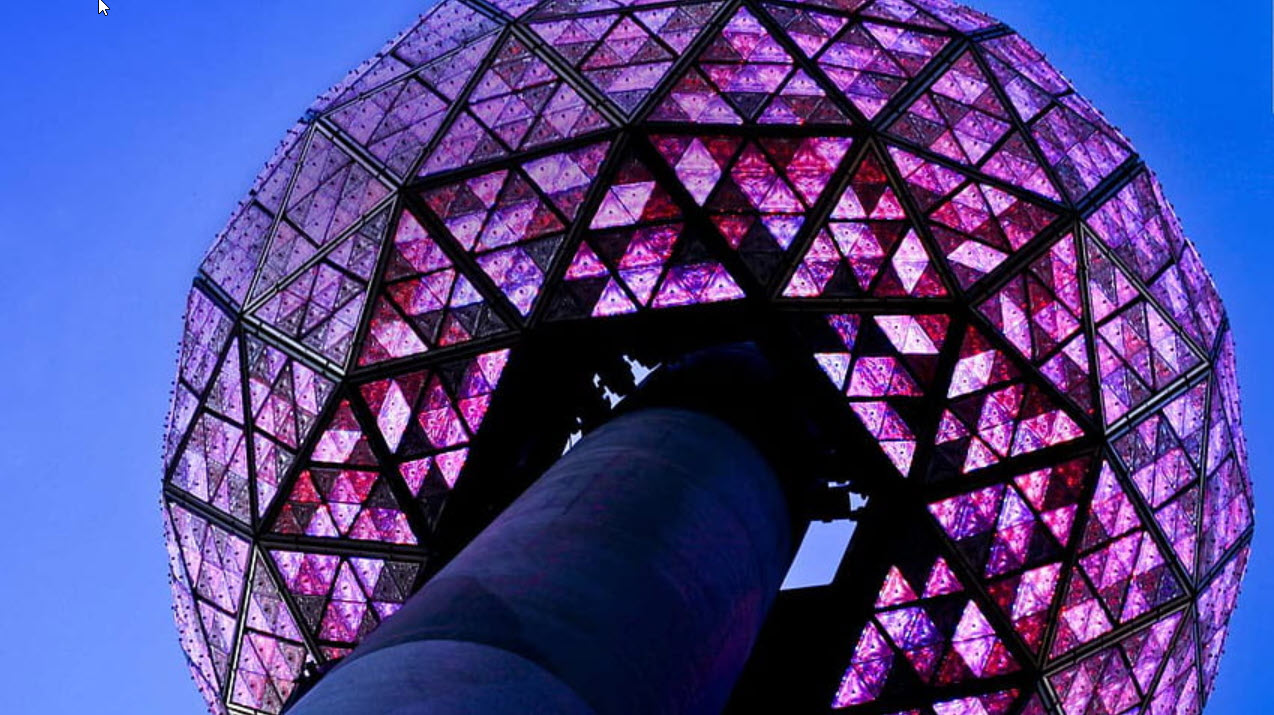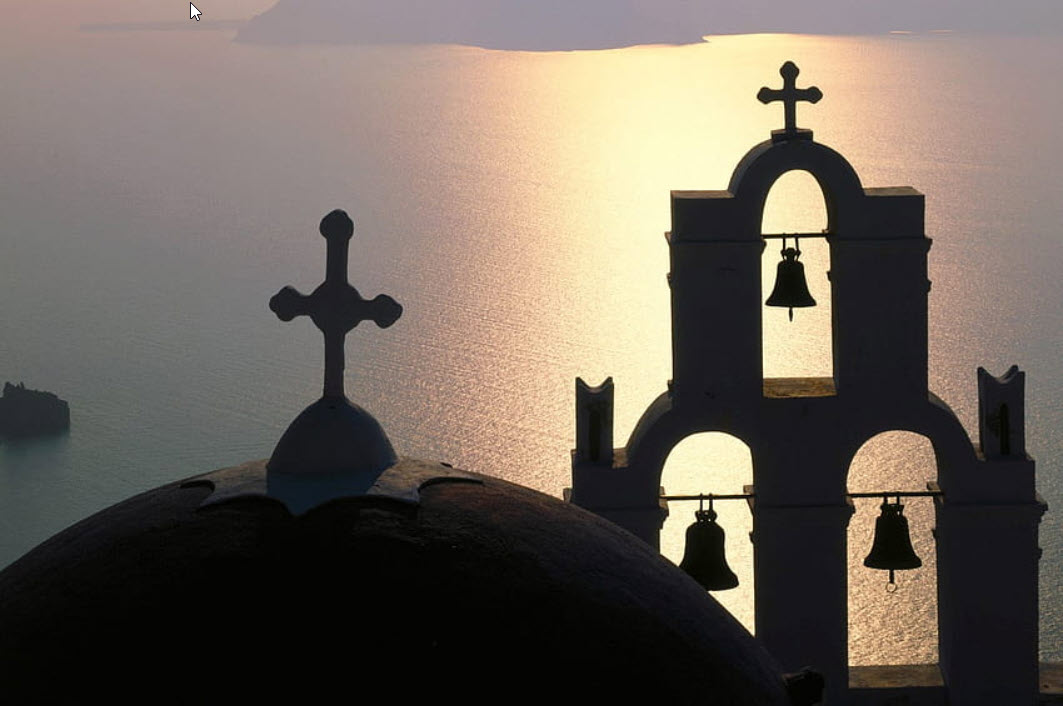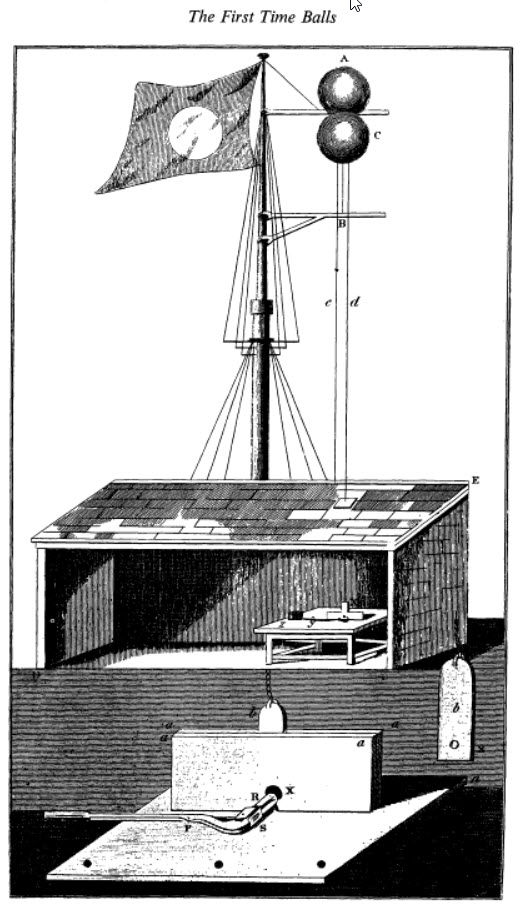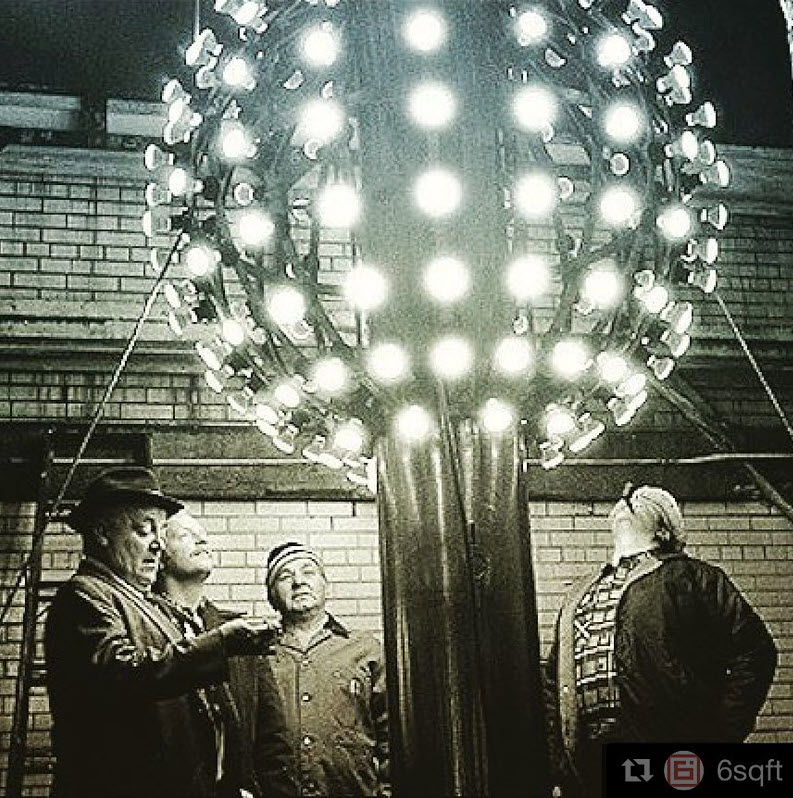
New York City’s New Year’s Eve ball drop in Times Square that ceremoniously marks the moment of change in year for the US Eastern time zone is not an original idea. In fact, the idea was copied from ball drops used by ship captains, the first of which was deployed in late 1829 at Portsmouth, England, on the country’s southern coastline across an inlet form the Isle of Wight …more on that later.
Common Use of Precise Time is New Concept
Before the 20th century, most people were informed of the exact time a few times a day as some church bells rang on the hour. Since 400 A.D., when Paulinus of Nola, a Roman poet, writer, and senator introduced the idea of church bells to call parishioners to worship, the carillons were progressively used for other purposes such as warning of fires, storms, or in the medieval times, attacks.

Time-keeping and alert concepts developed over the centuries including the first ball drop concept used by the ancient Greeks at an observatory that used a ball drop to mark a specific position of a star thus giving a precise time signal, but only for those standing at the observatory at the moment.
For the slower pace of life prior to the 1900s, imprecise time was not an issue. Knowing exact time more often became important to the masses only when industrialization made punctuality important as more and more workers began punching time clocks.
Precise Time for Mariners
We take knowing the time for granted these days…in fact, most of us live by the clock and are keenly aware of the minutes ticking by. But knowing the time and even having standard time zones are relatively new concepts.
But for sailors, especially ship captains, having access to the exact time was vital for navigational charting.
These mariners used a precision timepiece called a chronometer to keep track of time onboard ships so they could determine their longitudinal position using exact time and position of celestial bodies.
There were many prototypes before a working chronometer became available in the mid-1700s.
Read the history of the chronometer.
The videos give a more detailed history of the time ball and some interesting time-observing traditions in our native country of South Africa.
One can imagine the environmental factors aboard a ship that led to them being less than precise over time. So to remedy the need to sync the chronometers to a reliable time, Robert Wauchope, an admiral (captain at the time he worked on the time ball) in Britain’s Royal Navy, envisioned the time ball in 1818. [Image courtesy of Journal for the History of Astronomy, Vol. 12, P. 155, 1981]
He was a captain at the time and he spent years garnering support from the Admiralty for his plan to use a large hollow metal sphere rigged on a pole that was attached to a mechanism that dropped the ball at an exact time each day.
Finally in 1829, his device was tested for the first time at Portsmouth where the Royal Naval Academy was located. It was successful and in 1833, a time balls was installed at Greenwich followed by Liverpool and Edinburgh, Scotland, in 1836. The Portsmouth time ball at the Royal Observatory still operates today!

When American and French ambassadors visited England, Wauchope shared the concept. In 1844, the first US Naval Observatory was established in Washington D.C. making it possible to put the first American time ball into service in 1845.
The elevated balls were visible to ships along Britain’s extensive coastline. They were manually dropped at the same time each day (usually 1pm though US time balls dropped at noon) to enable ships to sync their chronometers.
The invention of self-winding clocks replaced the necessity of the chronometer so that by the 1880s, the time ball was no longer needed.
The Time Ball Lives On in NYC
But a few decades later in 1907, The New York Times answered the banning of its fireworks used during the New Year’s Eve celebrations with a lighted time ball drop. Organizers of the first ball drop had recognized the importance of ball drops to time and, lucky for us, decided a midnight drop of an illuminated ball was the perfect way to mark the occasion.
The Times Square New Year’s Eve Ball has dropped almost every year since 1907. The New York’s New Year’s Eve ball drop did not occur in 1942 and 1943 thanks to wartime blackouts during World War II. But party-goers still assembled in Times Square and observed the momentous change of year with a minute of silence followed by chimes that sounded from a truck parked near the base of Times Tower.

Image credit: #Repost @6sqft with @repostapp (CC BY 2.0) by Nicole Beauchamp





